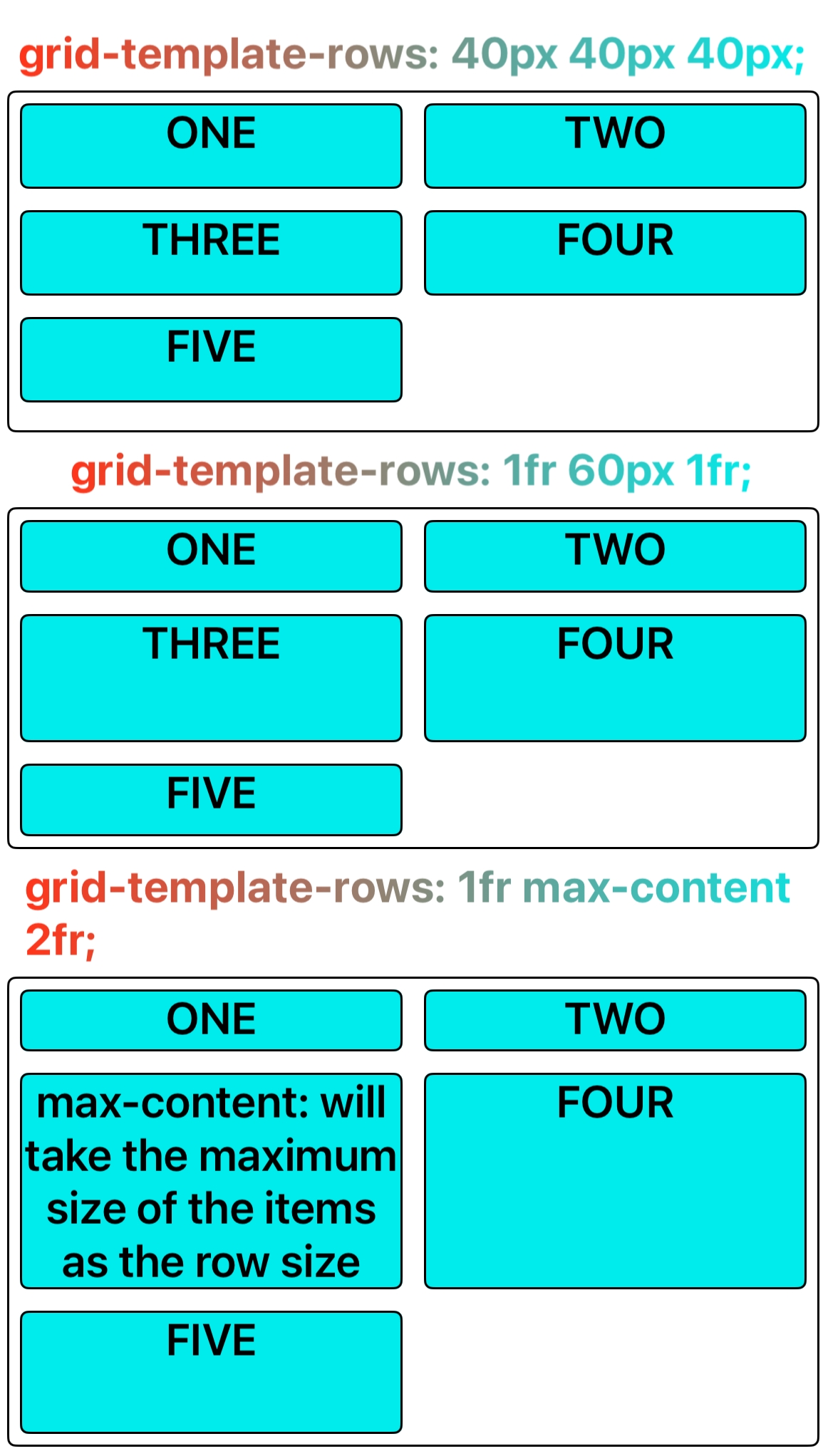grid-template-rows
Introduction
The grid-template-rows CSS property defines track sizing functions of the grid rows.
Examples

Syntax
Values
-
<length><length>is a non-negative length, giving the width of the row. -
<percentage>Is a non-negative
<percentage>value relative to the block size of the grid container. -
<flex>Is a non-negative dimension with the unit
frspecifying the track's flex factor. Each<flex>-sized track takes a share of the remaining space in proportion to its flex factor.When appearing outside a
minmax()notation, it implies an automatic minimum (i.e.minmax(auto, <flex>)). -
max-contentIs a keyword representing the largest maximal content contribution of the grid items occupying the grid track.
-
autoAs a maximum represents the largest
max-contentsize of the items in that track.As a minimum represents the largest minimum size of items in that track (specified by the
min-width/min-heightof the items). This is often, though not always, themin-contentsize.If used outside of
minmax()notation,autorepresents the range between the minimum and maximum described above.INFOautotrack sizes (and onlyautotrack sizes) can be stretched by thealign-contentandjustify-contentproperties. Therefore by default, anautosized track will take up any remaining space in the grid container. -
minmax(min, max)Is a functional notation that defines a size range, greater than or equal to min, and less than or equal to max. If max is smaller than min, then max is ignored and the function is treated as min. As a maximum, a
<flex>value sets the track's flex factor. It is invalid as a minimum. -
fit-content( [ <length> | <percentage> ] )Represents the formula
min(max-content, max(auto, argument)), which is calculated similar toauto(i.e.minmax(auto, max-content)), except that the track size is clamped at argument if it is greater than theautominimum. -
repeat(<positive-integer>, [<length> | <percentage> | auto])Represents a repeated fragment of the track list, allowing a large number of columns that exhibit a recurring pattern to be written in a more compact form.
Formal definition
| Initial value | Is a keyword meaning that there is no explicit grid. Any rows will be implicitly generated and their size will be determined by thegrid-auto-rowsproperty |
| Applies to | grid containers |
| Inherited | no |
| Animatable | |
| Percentages | refer to corresponding dimension of the content area |
Formal syntax
Difference between web
[line-names]is not supported.noneis not supported.masonryandsubgridare not supported.
Compatibility
LCD tables only load in the browser